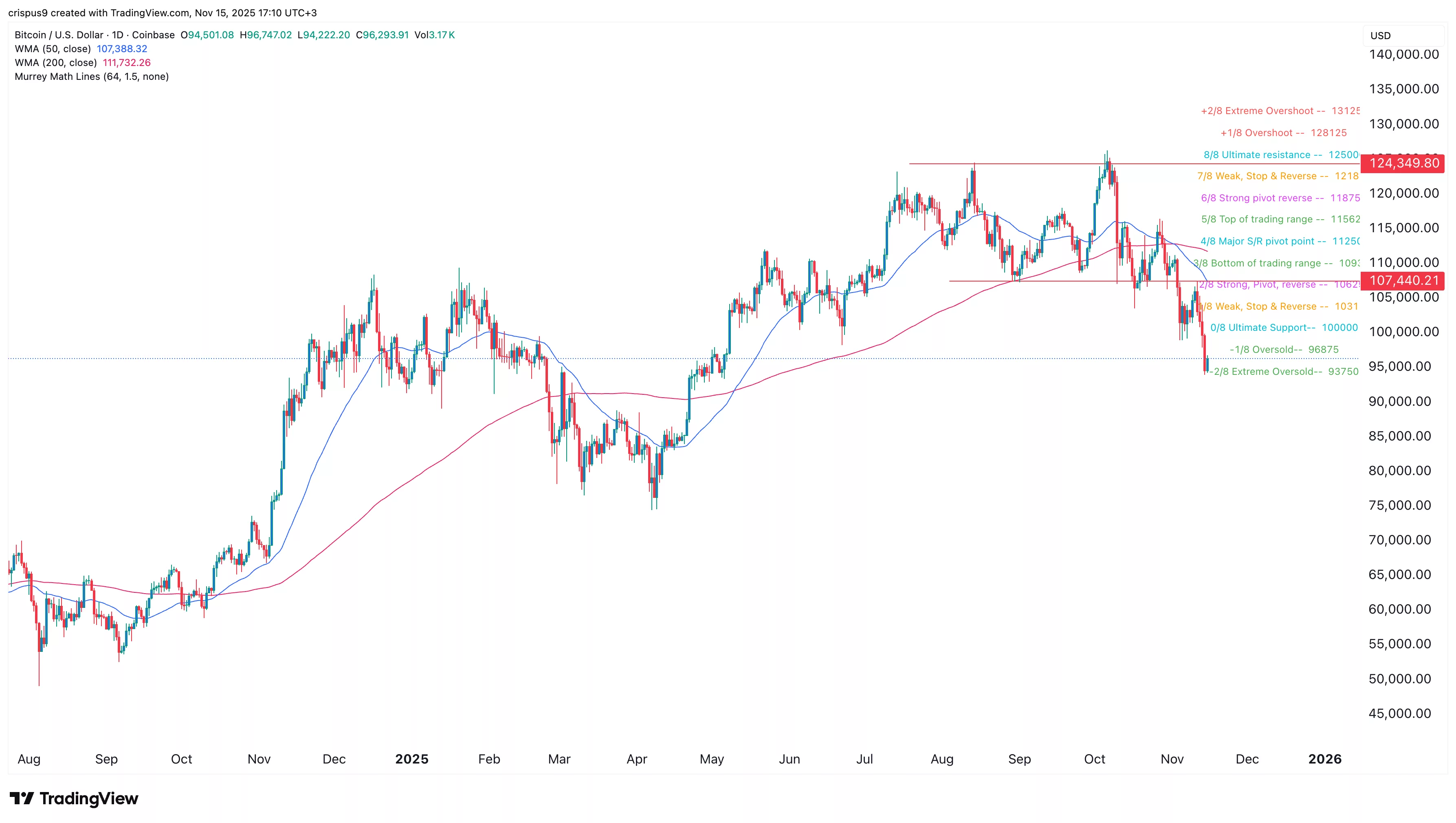The crypto bear market continued this week, with top coins like Bitcoin, Solana, Ethereum, and Ripple crashing by over 20% from their recent highs.
Summary
- The crypto bear market has remained in a bear market this year.
- This crash is happening amid the rising fear among investors.
- Bitcoin’s weak technicals have also contributed to the ongoing crash.
Ripple (XRP) token has crashed by over 38% from its highest level this year. Bitcoin (BTC) has moved by 25%, while Ethereum (ETH) has dropped by 36% from the year-to-date high. A bear market is defined as a period when an asset drops by ~20% from its local top.
The bear market is happening despite some good news in the industry. The most significant one was the recent Solana, XRP, Hedera, and Litecoin ETF approvals. Another one was the $500 million investment in Ripple by Citadel and Fortress.
Crypto bear market caused by liquidations and fear
One reason for the ongoing crypto bear market is that a sense of fear is spreading in the industry. Data compiled by CoinMarketCap shows that the Crypto Fear and Greed Index has moved to the fear zone of 25.
This fear is mostly because of last month’s events, when over $20 billion in positions were liquidated in a single day. Over 1.6 million traders were wiped out.
Liquidations have remained at an elevated level in the past few weeks. For example, over $1.9 billion was liquidated on Friday, with Bitcoin and Ethereum leading the way.
The ongoing fear has led to intense selling by investors in the futures market, with the open interest being in a downtrend. Also, the weighted funding rate of most tokens has flatlined in the past few months, while large Bitcoin holders have dumped tokens worth over $45 billion.
The crypto market has also retreated because of fatigue in the market, with many investors rotating to stocks. Besides, Bitcoin is up by just 2.3% this year, while the S&P 500 and Nasdaq 100 indices have jumped by over 20%.
Bitcoin price technicals have contributed to the crypto crash

Technicals are also not supportive of the crypto market. Bitcoin price has formed a double-top point at $124,350 and the neckline at $107,440. It has formed a death cross pattern as the 50-day weighted moving average and the 200-day average have crossed each other.
The coin has remained below the Supertrend indicator and moved to the extreme oversold point of the Wyckoff Theory. Therefore, there is a possibility that it will continue falling, with the next key point to watch being at $90,000. Such a move will fuel more weakness in the crypto market.









